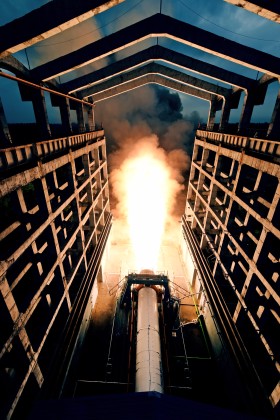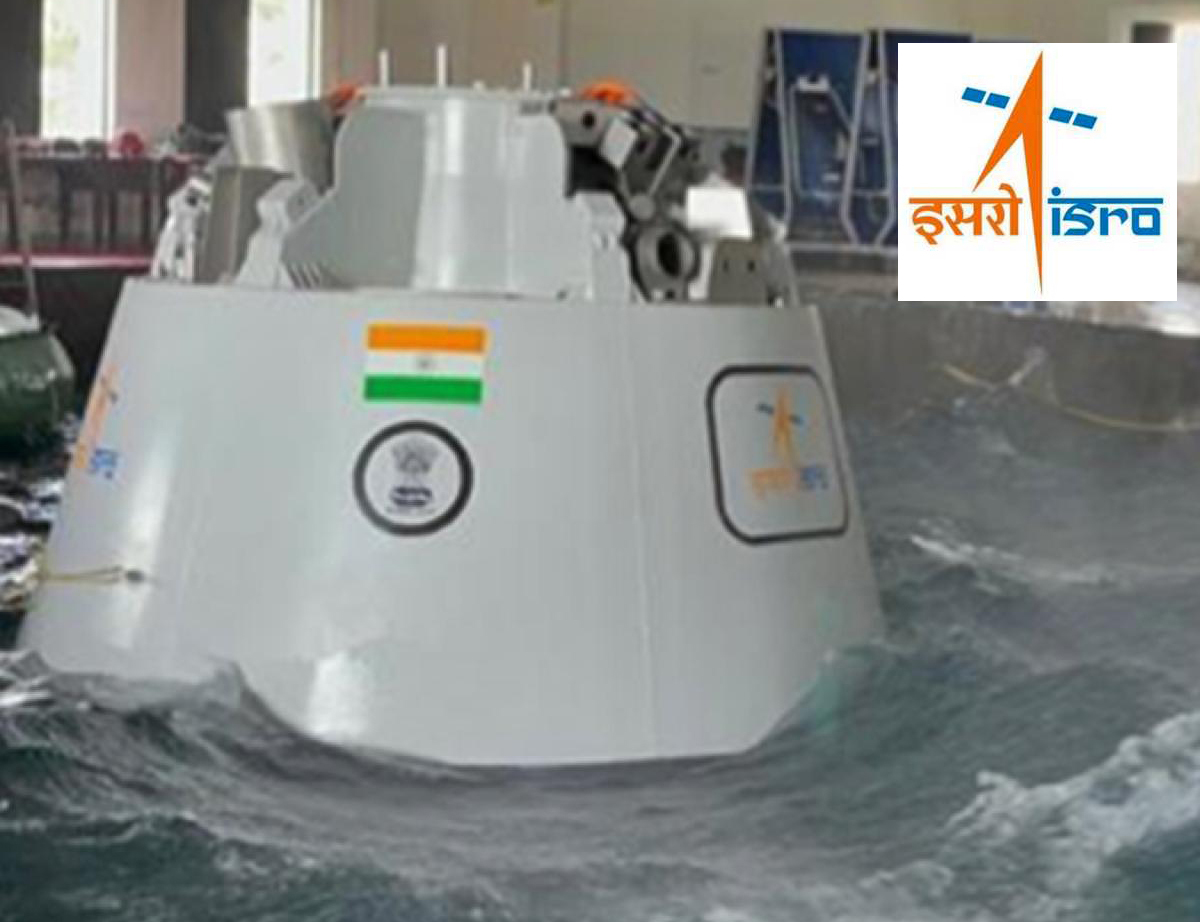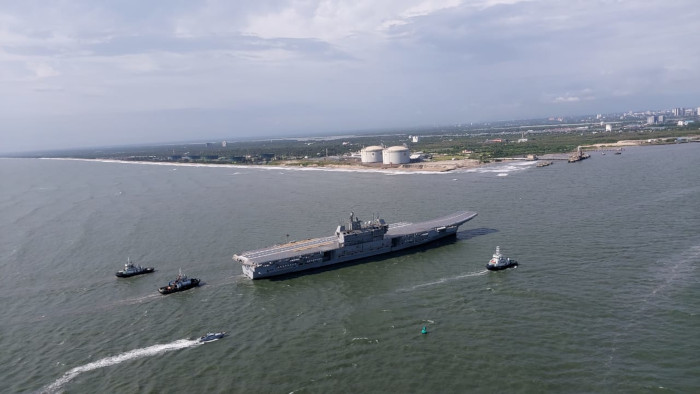
The human-rated solid rocket booster (HS200), loaded with 203 tons of solid propellant, was tested for a duration of 135 seconds. Photo: ISRO
BENGALURU (PTI): The Indian Space Research Organisation (ISRO) has successfully completed the static test of a human-rated solid rocket booster (HS200) for the Gaganyaan programme at the Satish Dhawan Space Centre (SDSC) in Sriharikota, Andhra Pradesh.
The HS200 is the human-rated version of the S200 rocket booster of satellite launch vehicle GSLV Mk III, popularly known as LVM3, the Bengaluru-headquartered space agency noted in a statement.
"The successful completion of this test (on Friday) marks a major milestone for the prestigious human space flight mission of ISRO, the Gaganyaan, as the first stage of the launch vehicle is tested for its performance for the full duration," it said.
The event was witnessed by ISRO Chairman and Secretary in the Department of Space, S Somanath, and Director of Vikram Sarabhai Space Centre (VSSC) S Unnikrishnan Nair along with other ISRO scientists.
The design and development of the HS200 booster were completed at VSSC, Thiruvananthapuram and propellant casting was completed at SDSC, Sriharikota.
The S200 motor, which is the first stage of the LVM3 launch vehicle intended for launching a 4,000 kg class satellite to the geosynchronous transfer orbit, was configured as a strap-on rocket booster.
Based on the successful launch pedigree of this launch vehicle including the Chandrayaan mission, the LVM3 has been identified as the launcher for the Gaganyaan mission.
For the manned space mission, LVM3 launch vehicle underwent improvements stipulated by the requirements of human rating, it was stated.
Accordingly, a host of design improvements aimed at increasing the safety and reliability of various systems were implemented in the S200 booster like all other systems.
These include additional safety features for motor case joints, robust insulation and ignition systems. The control system used in this booster employs one of the world's most powerful electro-mechanical actuators with multiple redundancies and safety features, ISRO said.
The system is indigenously designed and developed by ISRO in participation with various industries spread across the country.
"Despite the restrictions imposed by the pandemic, ISRO could complete the entire design, development, realisation and testing process within a short span of two years," the statement said.
The HS200 booster loaded with 203 tonnes of solid propellant was tested for a duration of 135 seconds. The 20-metre long and 3.2-m diameter booster is the world's second-largest operational booster with solid propellant, it said.
During the test, about 700 parameters were monitored and the performance of all the systems was normal, the space agency further said.
"With the successful completion of this test, ISRO marches one more step closer to Gaganyaan Programme," it said.
Out of the three propulsion stages of LVM3, the human-rated versions of the second-stage known as L110-G loaded with liquid propellant and the third stage C25-G with cryogenic propellant are in the final phase of qualification, including tests with static firing.
"Gaganyaan programme, the most prestigious scientific endeavour of India, is steadily progressing towards its final goal of taking an Indian to space and bringing him safely back," ISRO added.
 Previous Article
Previous Article Next Article
Next Article













The Indian Air Force, in its flight trials evaluation report submitted before the Defence Ministry l..
view articleAn insight into the Medium Multi-Role Combat Aircraft competition...
view articleSky enthusiasts can now spot the International Space Station (ISS) commanded by Indian-American astr..
view article